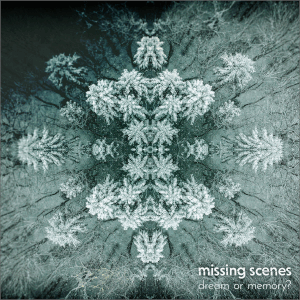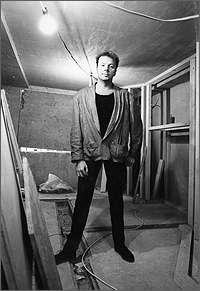
(August 2009) BILLY CURRIE (full name William Lee Currie), is a classically trained, multi-talented instrumentalist / composer, probably best known for his time served as a long standing member of new wave electronic rock/pop synth pioneers and ’80s hit makers Ultravox.
Often regarded by many as the creative genius and driving force behind the band,
Billy Currie is frequently described as the Hendrix of the synthesizer.
Sampling a wide spectrum of his work over the years would enable one to
understand exactly why. He is typically noted for his trademark soloing sounds,
which back in the days of the hits were created using his ARP Odyssey
synthesizer.
Today, Billy has become more acquainted with the world of soft synths,
integrating virtual instruments alongside more traditional sources. He
maintains his stance as a world class Viola/Violin player, ever experimenting
with an array of amplified sounds to support many environments and create
lasting moods.
“The Viola is a philosopher, sad and helpful; always ready to come to the aid of
others, but reluctant to call attention to himself,” Albert Lavignac (1846 –
1916).
Long after the classic line-up of Ultravox had disintegrated, Billy’s flow of
creative energy didn’t stop there. It continued to take a stronghold. As we
switch the spotlight to some of his most heartfelt work, it becomes apparent
that over the course of the years to follow, his solo output would be plentiful,
with a number of highly emotive albums demonstrating a wealth of diversity and
influence alongside Billy’s usual skill of great composition and melody.
IN THE BEGINNING
British born and hailing from Huddersfield, Yorkshire, Billy’s career to date
reaches far and wide. Playing in orchestras and quartets from the tender age of
twelve, touring with Gary Numan, a soundtrack to a soft porn film called Ain’t
Misbehavin (1974 – Tiger Lily), recording and writing what many consider to be
the soundtracks to the New Romantic Movement with Visage, (including the co-
writing of their biggest hit record Fade to Grey which charted at a U.K no. 8,
with a no. 1 in Germany), and performing at Live Aid with Ultravox in 1985. In
1993 Billy took part in a German Film Festival project, dedicated to the late
Conny Plank (Conny Plank produced the Systems of Romance, Rage in Eden and
Vienna albums and sadly, died of lung cancer in 1987), while later in 1995,
Billy worked with Violinist Blaine.L.Reininger in Brussels (from the American
band Tuxedo Moon).
Unsurprisingly Billy’s musical awareness developed very early on, aided by the
fact that his cousin bought him a guitar when he was just ten years of age. This
supplemented the fact that Billy had also started to sing – performing with the
Huddersfield Choral Society.
1961 would see Billy take up the violin, joining the school orchestra just the
following year. There were excellent prospects for Billy to obtain a place at
the Huddersfield School of Music, however, to take up such a golden opportunity,
Billy found himself having to change over to the Viola. The required change was
due to the fact that Billy had started quite late on the Violin. The switch
would become slightly confusing due to the use of different clefs, however, such
a challenge would not deter a student of Billy’s calibre and he would go on to
secure a place at the college in 1965. He commenced the intense training
typically required to become an orchestral player, studying composition, harmony
and also the Piano as a second instrument. Following the switch to Viola, Billy
was able to enjoy playing in some of the best string quartets and led the Viola
section in the orchestra. Billy also performed in a Viola, Clarinet and Piano
trio.
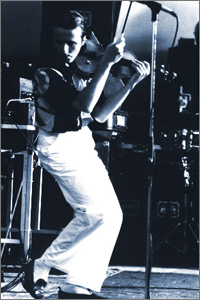 Herbet Whone was Billy’s Viola teacher (Herbet produced numerous books including
Herbet Whone was Billy’s Viola teacher (Herbet produced numerous books including
The Hidden Face of Music, as well as being an accomplished painter), but it
was Billy’s discovery of composers such as Bartok, Schoenburg, Honegger and
Varese that enabled him to further enhance his knowledge and understanding. His
recollection from first hearing the last movement of the Bartok Fifth Quartet
was something that would provide insight. Further to that, playing the Piano
became the exercise that would further introduce Billy to the art of composing,
laying firm foundations for his future projects.
CONTINUING THE JOURNEY THROUGH THE EARLY YEARS
1969 would see Billy achieve his main objective of that time by securing a place
at the Royal Academy of Music in London. It was at this point that Billy would
make a life changing decision. That decision was not to take up his place at the
Academy. Alternatively, Billy’s gut feelings would lead him to look at
participating in other areas of musical expression – this time within a band
format with a strong jazz and blues influence. The band, in which Billy played
Viola, would eventually settle on the name Company Roadshow.
“Transportation – it can push the boundary of every musical continent, but I
urge you to go the distance – it actually makes for a very workable and
memorable round trip….”
Shortly later came the time to move on and in 1970 Billy would relocate from
London back up to Huddersfield, then getting involved with occasional project
The Ritual Theatre, a group of classically trained musicians complete with
four dancers. During this period, Billy would then move to Bristol, joining the
band Flash Gordon, before yet another move – this time to Bath, where he would
work with a singer/guitarist Jeff Starrs, playing Piano in the live environment
for the first time. They would support The Strawbs at the key time when the
single “Lay Down” hit number one in the UK charts. In In 1972, a wild recipe
containing oats was on the agenda! Wild Oats being the band Billy played with
that would support Hawkwind at Bradford St Georges Hall. More work followed
with Ritual Theatre.
1973 would deliver a key turning point when Ed Francis, one of the dancers from
Ritual Theatre would introduce Billy to vocalist John Foxx. John Foxx fronted
the band Tiger Lily. At this point Billy had moved once again from
Huddersfield back to London. He would perform with John, gaining a strong sense
of refreshment in the musical sense – the wheels that would take Billy to new
territories were now firmly set in motion.
STEERING THROUGH THE ’70’S
Billy would have complete confidence in this new found area of musical
expression. So much so, that despite his monotonous work in a warehouse at that
time, this didn’t bring him down. Huge amounts of work would be put into Tiger
Lily, four nights a week being set aside for rehearsal as well as all day
Sunday. In 1974 Tiger Lily would do a soundtrack to a soft porn filmed entitled
Ain’t Misbehavin’, later released as a single – the proceeds of which Billy
would use to buy an Electric Piano.
1975 would lead to another key meeting, this time with Steve Lillywhite who
worked in Phonogram Studios in London. It was an introduction that would offer
Tiger Lily a great opportunity to put down their new songs when the studio was
free. Come 1976, Tiger Lily would sign to Island Records, Steve Lillywhite would
produce, and further experimentation with sounds would commence. The band would
change their name to Ultravox!, putting out three records on Island, namely,
1976’s Ultravox, 1977’s Ha! Ha! Ha! following with Systems of Romance in
1978, the latter being produced by Conny Plank & Ultravox.
Sadly, low record sales would force the hand within Island Records to drop
Ultravox in 1979. To further dampen spirits, Ultravox had set out on their first
tour of the United States, laden with the prospect of John Foxx’s imminent
departure from the band, to embark on a solo career upon return to the U.K.
QUIET MAN MEETS NEW ROMANTIC
 Back on U.K shores Billy would come to his next cross roads – standing at that
Back on U.K shores Billy would come to his next cross roads – standing at that
junction was DJ Rusty Egan. Rusty would play tracks from Systems of Romance at
his club in London, a club that ironically was named ‘Billy’s’! [The scene later
moving to the Blitz club]. It was at this point that Billy was presented an
opportunity to work with the band Visage. Visage were a studio project which
would consist of Rusty Egan, Billy Currie, Midge Ure, and Steve Strange, as well
as three musicians from the band Magazine – Barry Adamson, John McGeogh and
Dave Formula. Shortly later Billy would get an invite to play on Gary Numan’s
U.K. tour, on offer he duly accepted. It was on this tour that the backing track
to Visage’s big hit “Fade to Grey” was put together by both Billy and keyboard
player Chris Payne, during soundchecks. Billy would return from tour to continue
with the Visage album, and would later invite colleague Midge Ure into Ultravox.
Moving into the 1980’s would bring not one, but two albums – Visages self
titled and Ultravox’s Vienna.
BREAKING NEW GROUND
1980 would prove a great success in terms of albums, with both Visage and Vienna
becoming hugely successful, and not just in the U.K. Ultravox would sign to
Chrysalis Records and the single Vienna would climb the UK chart to secure its
place at number two, held off the top slot only by Joe Dolce’s novelty record
Shaddup Your Face.
As a band Ultravox would become a sum of many parts, with visuals playing a
large role in defining the band as an entity. Not only was their music unique,
but their videos would also prove them to be leaders rather than followers. They
extended the boundaries for artistic expression using intelligent manipulation
of sound, film, lighting, lyrics and art, all elements being skilfully crafted
to create maximum impact. The years that lay ahead would be productive with more
successful albums – 1981’s Rage in Eden, 1982’s Quartet and 1984’s Lament.
Visage would also release The Anvil in 1981.
STANDING ALONE
 It may be that Billy was considering solo output as early as 1983 – having
It may be that Billy was considering solo output as early as 1983 – having
already written some tracks that would later appear on Keys and the Fiddle,
however 1988’s excellent Transportation album was his first adventure out into
the wilderness under the solo banner, the album featuring guest Steve Howe [Yes]
on guitar.
Accidental Poetry of the Structure is a superbly accurate title, representing
an equally impressive collection of sensual and evocative compositions.
As we push the spotlight onto some of Billy’s most innovative albums, it’s
apparent that the solo compositions of Billy Currie contain huge amounts of
atmosphere coupled with various personalities that are in the main,
sophisticated with classical twists of elegance plus some good old fashioned
vibes, all of which sit nicely alongside a flirtation to the modern edge –
whether that be the sounds or in the production itself. Billy rarely shows a
passion for mundane simplicity, instead, on first listen be prepared for some
dramatic sequences and an immensely varied mixture of creative energy. Billy’s
talent shows great endurance in that a new solo release is due out sometime in
2009, proving that although Ultravox, until recently, had experienced
significant downtime, Billy’s talents never really expired, but rather matured
with age.
Clearly Billy has an impressive body of solo work to date, however, other
essential hidden instrumental treasures which feature Billy Currie are also in
existence, having made their appearance in the context of both Ultravox and
Visage, long before Billy explored further with his solo work…
::..:::…..:..::….:::::..:::..:::::::……:::…::.:::….::::..:..:::…::…….:::::
REVIEWS
 Transportation :: Originally released in 1988 & Billy Currie’s first solo effort, this album has
Transportation :: Originally released in 1988 & Billy Currie’s first solo effort, this album has
been knowingly and lovingly crafted, taking on a strong theatrical stance.
“Transportation” sums up the whole record – it’s vast, majestic, wild and
remote. Billy plays the piano with incredible intent here, creating phrases
which contrast later with the more subtle parts of the track. An incredible
journey, true of the whole album and not just its title track, with some
stunning guitar parts courtesy of guest Steve Howe [Yes]. Listen carefully as
“Transportation” resolves with a short violin section and you will hear “The
Ascent.” Ultravox continue to stir the undercurrent of some fast moving waters
– Billy’s loving relationship with the keys during “Rackaia River” at one point
contain traces of “Astradyne.”
“Perfect Flight” oozes pure passion – the whole feel of this track has an
underlying sexy connotation, and its soulful presence sits well in a swanky New
York cocktail bar.
Every track on here shimmers with artistic richness resulting in a work that’s
both eccentric and adventurous.
Some would say it’s extreme, in that it can push the boundary of every musical
continent, but I urge you to go the distance – it actually makes for a very
workable and memorable round trip.
::..:::…..:..::….:::::..:::..:::::::……:::…::.:::….::::..:..:::…::…….:::::
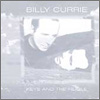 Keys and the Fiddle :: The bright cover art available with the download version is somewhat abstract,
Keys and the Fiddle :: The bright cover art available with the download version is somewhat abstract,
resembling a 1970’s BBC test card. Largely an album of contrast and
contradiction it’s immensely unpredictable which all makes for very interesting
listening.
There are some impressive vintage sounding cuts that appear on this offering.
“Riding White Horses” consists of layered synth textures of extravagance –
climbing to great heights, and sitting well alongside structured electronic
beats. “Sojourn” again is a lively beat driven, vibrant sounding composition,
with some shimmering keyboard sounds contrasting nicely with classically styled
guitar. “Break Down My Door” holds the key to amplified blues driven guitar
sounds which literally cry out courtesy of guitarist Russell Bell.
In summary, Keys and the Fiddle is an innovative work, while giving strong
hint to Billy’s primary roots.
::..:::…..:..::….:::::..:::..:::::::……:::…::.:::….::::..:..:::…::…….:::::
 Push :: Billy explores many avenues in his own unique and subtle way; there are moments
Push :: Billy explores many avenues in his own unique and subtle way; there are moments
on here that would ignite the imagination of those who appreciate elements of
Pink Floyd, Space Ritual, Tangerine Dream and Hawkwind.
“Stand Like a Balance” has a depth of spiritual essence and will appeal to the
purist looking for a connection with nature. Edging into anthems of the dance
variety, “Step Forward” is a fine example, while those distinctive ARP Odyssey
sounds cut through and define tracks such as “Kissing the Shame” and “In to
Space,” injecting that essential element of Billy Currie originality.
“Theremin” is a majestic tune in its own right – great piano enhancements which
trickle through the track and seek attention throughout, while “Rollback”
identifies itself as a playful piece, prior upping its pace. “Cross Hands”
spills both sunshine and tranquility. With the usual thirst for drama and
extravagance, “The True Transmission” feels very classic Billy Currie.
“Why Do You Hang on Me” is a rather exquisite journey which manages to capture
an element of Albert Lavignac’s quotation relating to the Viola. It’s easy to
feel such words within this work – a deeply moving force of compelling
sensations and a definite showpiece of the album.
A classic in the true sense, each distinctive track portrays powerful musical
imagery, heavily weighted with emotionally charged and eloquent synthesizer
sounds.
::..:::…..:..::….:::::..:::..:::::::……:::…::.:::….::::..:..:::…::…….:::::
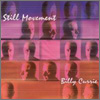 Still Movement :: In the main Still Movement is a vast musical landscape containing a laid back
Still Movement :: In the main Still Movement is a vast musical landscape containing a laid back
collection of ambient sounds. Home to huge pools of tranquility, this album
overflows with atmosphere.
“Waving Hands in Clouds” will have you immersed in its reflection. “Step
Forward to Seven Stars” is an airy track with a nice progression of muscular
sounding chords, complemented by some excitable lighter piano lines played on
the higher octave. “The Waves Look Sleepy” induces high cries from the violin
upon introduction, before settling into its strong rhythmical flow. Springing a
desolate feeling “The Other World” showcases some spirited interaction of rich
synth responses to the pianos more sombre personality. Uplifting moments of
inspiration emerge with “Stately” with its modern sounding dance beat.
“Afterglow” is a luminous track with subtle and imaginative percussion parts –
it marches through the musical wilderness with some well put together chord
sequences, a captivating violin melody line complete with pretty eruptions of
sparkling synth sounds.
Despite beautiful soothing overtones Still Movement remains adventurous,
resulting in a truly diverse electronic experience, maintaining the courage of a
modern edge.
::..:::…..:..::….:::::..:::..:::::::……:::…::.:::….::::..:..:::…::…….:::::
All above-mentioned releases are out now. [Listen / Purchase]












